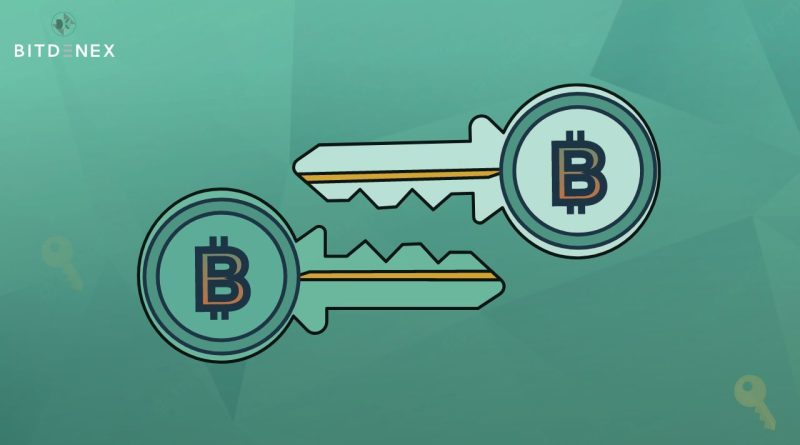What are Public & Private Keys in Cryptocurrency and What is the difference between them?
Introduction
Public-key cryptography is a technique that allows users to send and receive data and/or crypto assets over a blockchain network without requiring the transactions to be verified by a third party or trusted intermediary.
Public and private keys are central to the concept of decentralisation and the world of cryptocurrency, and nearly all crypto projects on the market today use them. Users can use these keys to send and receive crypto to anyone and anywhere at any time, in a completely decentralised and extremely secure manner.
These public and private keys fit together cryptographically to form a key pair that can be used to access crypto funds. A private key is one that is kept by the user and not shared with anyone else, whereas a public key is one that is shared in order to receive funds from another network user.
It functions similarly to a safety deposit box or a bank locker, requiring two sets of keys to unlock and access its contents.While a bank locker uses this concept in a more physical sense, this is the cryptographic version of the same concept that employs a complex encoding system to ensure that bad actors cannot decipher it.
So, what Is a Public Key?
A public key is what enables a user to receive crypto transactions from other network users. It is a cryptographic code that, as previously stated, is paired with or linked to a private key. While the public key can be used to send funds to anyone on the network, the corresponding private key is required to access it. As a result, the public key is the one that can be freely shared. Sharing one’s public key poses no risk to one’s funds because it is mathematically coded and completely secure.
What Is a Private Key?
As previously stated, the private key is the second component of the larger code used to access your crypto assets. That portion of the key should be kept solely by the owner of the crypto assets and should not be shared with anyone. As a result, it is critical that it not be shared with anyone because it allows the owner to actually prove ownership and spend the funds associated with your public address. A private key can be represented by a 256-character binary code, a 64-digit hexadecimal code, a QR code, or a mnemonic phrase.
Regardless of the form, it is usually a very large number, and for good reason. To improve security, a private key includes a “trapdoor” function, which basically means that a private key can be used to generate the public key but not the other way around. As a result, multiple public keys can be linked to a single private key.
| Private Key | Public Key |
| A private key is one that controls one’s crypto assets. | A public key is used to send and receive funds from other users. |
| A private key must not be shared with anyone. | A public key is intended to be shared with other network users. |
| A private key is encrypted and secured so that only the owner has access to their funds. | A public key merely serves as an address for the user attempting to transfer funds. |
How do public and private keys work together?
Let’s look at an example to see how public and private keys interact. If person A wants to send money to person B via a blockchain network, he or she will need person B’s public key to do so. Assume person A has it and sends the funds, but how will person B receive them? This is where the concept of “digital signing” comes into play.
A transaction on the blockchain must be signed in order to be completed. This is how it works:
- A public key is used to encrypt the sending transaction. Only the accompanying private key can decrypt this transaction.
- The transaction is then “signed” with the private key, proving that it has not been modified. This “digital signature” is created by combining the private key with the data sent in the transaction.
- Finally, the transaction can be validated using the accompanying public key.
As a result, this “digital signature” is required in a blockchain transaction to prove one is the owner of the funds. A blockchain network’s nodes automatically check and authenticate transactions, and any unauthenticated transactions are rejected by the network. And, because everything is taking place on a distributed immutable ledger, an authentic, mined transaction on the blockchain is completely irreversible.
So, where are your private keys?
In most cases, private keys are assigned to the custodian of the crypto assets under consideration. As a result, if you have a cryptocurrency wallet, the private key is directly linked to that wallet and does not exist anywhere else on the blockchain network.
However, if you purchased and stored crypto assets on a cryptocurrency exchange, particularly a centralized exchange, the private keys and thus your crypto assets are in the custody of the exchange and not in your custody. It is analogous to trusting your valuables, such as gold or other important documents, in a bank by storing them in a bank locker or vault.
Conclusion
As participants in the crypto ecosystem, which is run entirely by code and without human intervention, understanding the principles that govern this type of ecosystem becomes critical. Furthermore, the concept of public and private keys serves as the foundation for all cryptographic transactions that take place on the blockchain network, making it even more critical for a user to understand the concept in order to properly safeguard their own funds.
Buy and sell crypto in minutes with 0.20% trading fees at Bitdenex Exchange.

